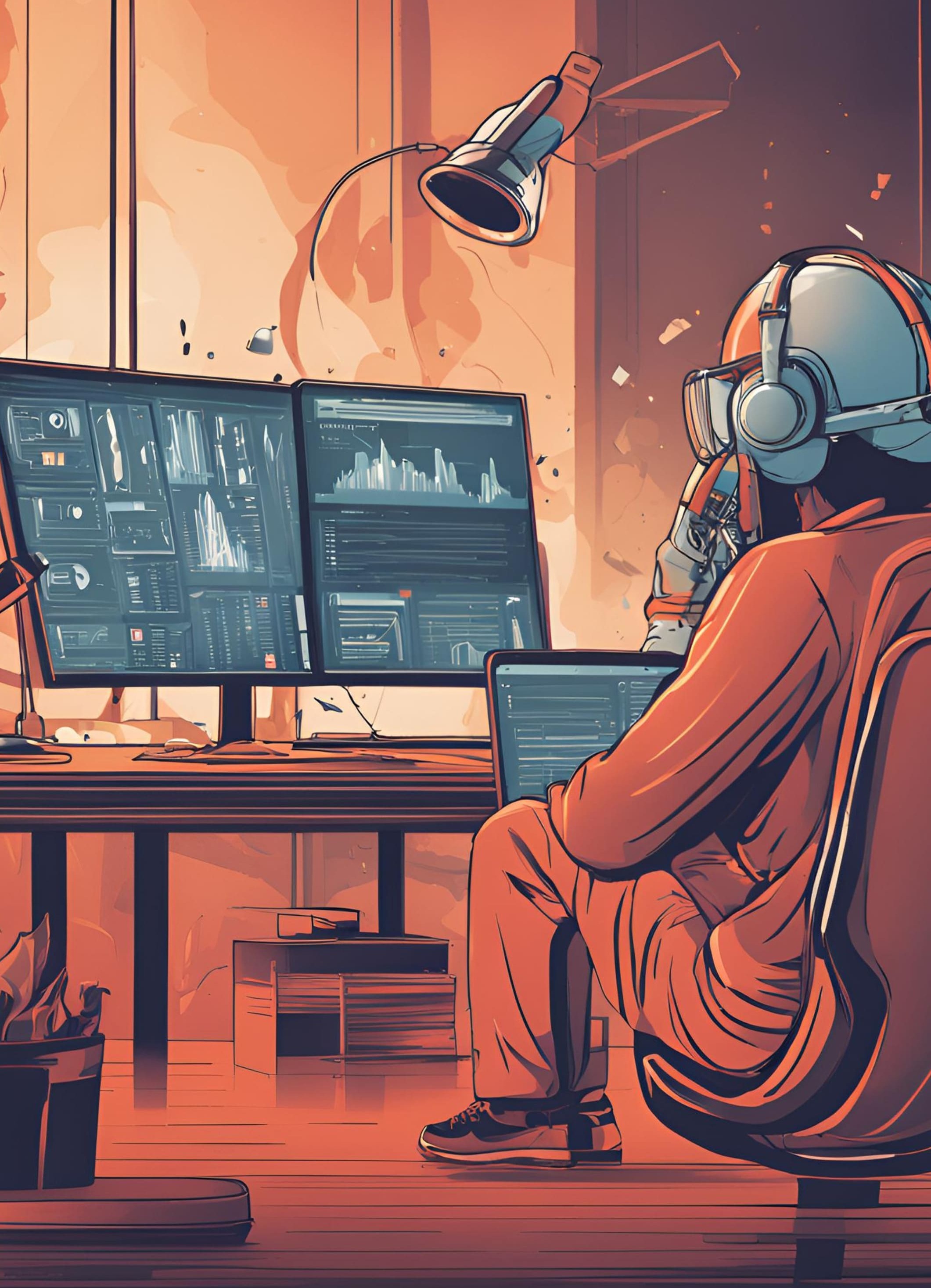
Introduction
As the demand for skilled software developers and IT professionals continues to soar, so do the pressures and challenges they face. One significant issue that has emerged is burnout—a state of physical, emotional, and mental exhaustion caused by prolonged stress. Burnout not only impacts the individual but also affects team productivity, quality of work, and overall company morale. This white paper explores the causes and signs of burnout among IT and software engineering staff and how Pulsopus, our proactive well-being and performance management solution, can help detect and mitigate these risks.
Understanding Burnout
Burnout goes beyond mere fatigue or a lack of motivation. It is a severe condition characterized by:
- Emotional Exhaustion: Feeling drained and overwhelmed by work demands.
- Depersonalization: Developing a cynical attitude towards work and colleagues.
- Reduced Personal Accomplishment: Feeling ineffective and lacking a sense of achievement at work.
In the IT and software development sectors, factors contributing to burnout include high workload, tight deadlines, constant technological changes, and the need for continuous learning and adaptation. Moreover, the current geopolitical situation, such as the ongoing war in Ukraine, adds a persistent layer of stress for many professionals in the region.
Insights from Our Research on Burnout and Demotivation
We conducted an extensive study, incorporating insights from Human Resources experts, team-building specialists, and motivation coaches. Key determinants of employee demotivation and burnout include:
- Breach of Psychological Contracts: Unfulfilled promises or expectations between employer and employee.
- Underutilization of Skills and Talents: Employees’ capabilities and strengths remain untapped.
- Neglect of Ideas and Initiatives: Failure to acknowledge or implement employee-driven innovation.
- Diminished Sense of Belonging: A lack of connection or integration within the organizational culture.
- Stagnation in Professional Development: Absence of opportunities for growth and advancement.
- Lack of Recognition: Inadequate acknowledgment of achievements and contributions.
- Absence of Status Progression: Failure to reflect growth in position or responsibilities.
- Micromanagement: Excessive oversight and control that stifles autonomy and creativity.
- Erosion of Managerial Trust: Perceived distrust from leadership undermines employee confidence.
- Deficiency in Feedback: Inadequate or absent constructive feedback, hindering performance improvement.
These factors can have profound negative effects on both overall team dynamics and individual well-being, contributing to burnout and a toxic work environment.
Six Stages of Demotivation Leading to Burnout
Understanding the stages of demotivation is crucial for early intervention:
- Surprise: The individual experiences mild stress, surprise, and disorientation. Despite these emotional shifts, their productivity remains consistent.
- Ignoring: Disruptive behavior begins, with information withholding and deteriorating communication. Productivity starts to decline.
- Rebellion: The individual displays irritation and helplessness, often neglecting tasks. Withdrawal or defensive posturing may occur, although productivity might temporarily increase.
Tip: At these early stages, management’s timely intervention can potentially reintegrate the individual into a constructive mindset, restoring both productivity and well-being. However, detecting these changes can be challenging without open communication. Quantitative metrics may initially show increased productivity, followed by a decline during stages 2 and 3.
- Disillusionment: Disenchantment with management and the organization leads to active resistance, criticism, and apathy, causing productivity to plummet.
- Strike: The individual begins instigating conflicts, minimizing responsibilities, and spreading discontent within the team.
- Drudgery: The individual reaches deep apathy and depression, approaching work as if serving a prison sentence. Their behavior becomes lethargic and unresponsive.
By the time a specialist reaches the final three stages, their attitude toward the company and psychological state are generally considered irreversible, often resulting in voluntary resignation or termination.

Early Signs of Burnout
Identifying burnout early is crucial. Some indicators include:
- Decreased Productivity: Noticeable drop in work output and efficiency.
- Increased Absenteeism: Frequent unexplained absences or lateness.
- Withdrawal: Reduced interaction with team members and participation in discussions.
- Negative Attitude: Pessimism, irritability, and frustration with work tasks and colleagues.
Strategies for Managers to Prevent Burnout
1. Balanced Workload
Ensure tasks are clearly defined with realistic expectations. Help your team prioritize and manage their workload effectively to avoid overload.
2. Autonomy and Control
Allow employees the freedom to make decisions about their tasks. This autonomy boosts engagement and reduces the risk of burnout.
3. Social Support
Create a supportive work environment where team members feel understood and valued. Regular check-ins and open discussions can help identify problems early.
4. Recognition and Rewards
Acknowledge and reward hard work and achievements. Recognition significantly boosts morale and motivation.
5. Planned Rest Periods
Encourage regular breaks and ensure employees take their vacations. Planned downtime is essential for recharging and maintaining productivity.
6. Continuous Development
Support ongoing learning and skill development. Providing opportunities for growth helps employees feel confident and motivated.
Addressing Burnout When It Occurs
If burnout has already set in, consider these steps:
- Open Communication: Encourage honest discussions about workload and stressors.
- Workload Adjustment: Reassess and redistribute tasks to alleviate pressure.
- Professional Help: Consider counseling or coaching to address deeper issues.
- Extended Leave: If necessary, allow for extended time off to fully recover.
How Pulsopus Can Help
Burnout is a pervasive issue in the IT and software development industries, but with proactive measures and the right tools, it can be managed and prevented. Pulsopus provides comprehensive insights into team dynamics and early signs of burnout, empowering managers to take timely actions to maintain a healthy, productive workforce.
How Pulsopus Works:
- Data Collection: Pulsopus integrates with tools like MS Teams, Slack, Outlook, Jira, and GitHub to gather activity data without requiring any software downloads or installations.
- Behavior Analysis: We analyze communication patterns, activity spikes, and declines to detect early signs of burnout.
- Insight Generation: Our platform provides actionable insights, allowing managers to make informed decisions about workload adjustments, recognition, and support.
By leveraging Pulsopus, IT companies can not only detect and prevent burnout but also foster a more supportive and efficient work environment, ultimately leading to higher employee satisfaction and retention.
Conclusion
Addressing burnout is not just about responding when it’s too late—it’s about creating an environment that supports employees throughout their journey. By taking proactive steps and utilizing tools like Pulsopus, managers can build a culture that values well-being, ensuring that their teams remain engaged, productive, and motivated.
